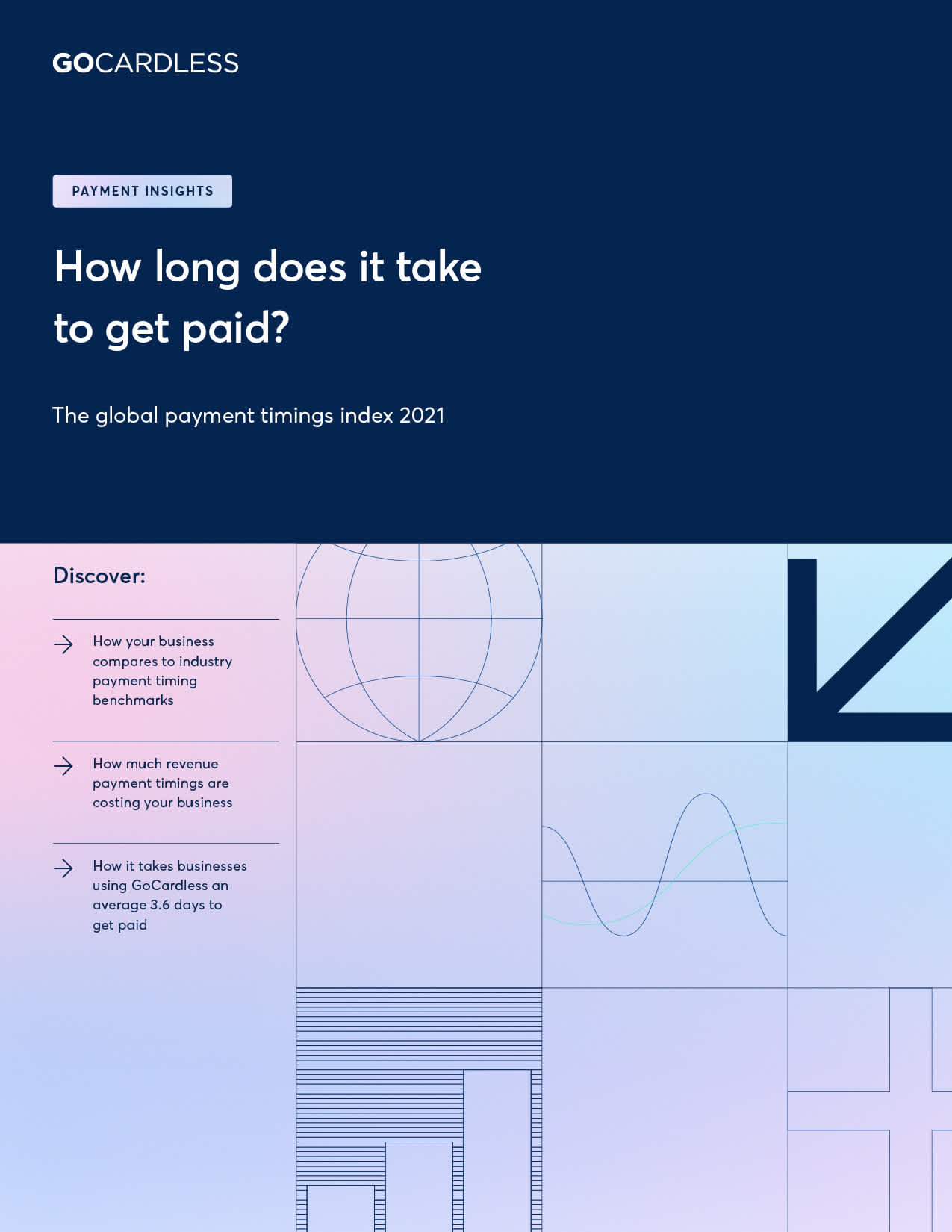
The 8 payment dimensions: Cashflow
Last editedFeb 20223 min. read
As your business grows and expands, collecting payments becomes more complex and costs can quickly rise. Choosing the right payment strategy and making your payment operations efficient is crucial to your business’ growth and ability to remain competitive.
Cash flow is particularly important for businesses large and small. This guide identifies why cash flow is critical for every business, how you can measure it and how to improve it.
Over the last 10 years, we’ve developed a dedicated solution to help businesses with their payments process. From conversations with customers and market research, we understand the best ways to approach a payment strategy and have identified the best practices for collecting payments.
In order for businesses to evaluate the effectiveness and efficiency of their own payment strategies or prospective solutions, we developed the 8 payment dimensions. This framework is built with the intention of businesses to assess their payment strategy or prospective technologies and decide what actions are best for them.
Cashflow is an outcome of your payment strategy and falls into what we define as the impact category, one of the three categories that the 8 payment dimensions can be grouped into:
Customer acquisition
Recurring payment operations
Impact
In this guide, we will focus on the seventh dimension of the 8 payment dimensions, Cashflow, and how you can optimise cash flow for business growth.
Watch this useful video overview of the 8 payment dimensions framework and how you can use the framework to assess and improve your payments strategy.
What is Cashflow?
One of the easiest ways to measure the success and impact of your payment strategy and solution is to look at cash flow. But what exactly is cash flow and how can we measure it?
In this guide we refer to two types of cash flow:
Cash flow - with a space - refers to the net amount of cash flowing in and out of a business.
Cashflow - without a space - refers to the seventh dimension in the 8 payment dimensions. Explicitly looking at the measure of how long it takes to settle a payment, once it becomes a receivable (aka, payment timings).
For the purpose of this framework, Cashflow is measured as the average number of days it takes the money you’re owed to be collected. From the day you would like to charge your customer - the charge date, until the day the money arrives in your bank account - the payout date (excluding payment terms).
In a study commissioned by GoCardless from Forrester Consulting, 80% of all respondents were found to have a Days Sales Outstanding (DSO) that was 20-30 days, meanwhile, only 4% of all respondents have a DSO of 10 days or less.
Meanwhile, in The Global Payment Timings Index 2021, GoCardless customers saw an average payment timing of just 3.6 days. However, factors like business size, payment method, location and industry also play a role in payment timings.
Why is Cashflow important?
The main advantage of recurring revenue businesses is the predictability that regular revenue brings for cash flow and forecasting. However, the recurring revenue model isn’t without its challenges.
As your business scales and grows, collecting regular payments successfully and quickly becomes more important. If your business is considering making long-term and future-focused investments or even attracting new investment, having a healthy positive cash flow plays a key role.
Cash management and ensuring your business doesn’t have excess revenue in receivables - revenue that is due to be paid by your customers but has not been collected - can significantly impact your working capital. The more revenue that remains uncollected, the higher risk your business is exposed to.
When payments become uncollectible, this poses an even greater risk for businesses. For the majority of B2B firms, over 10% of failed payments turn into bad debt. If your business can successfully reduce the time it takes to get paid, reduce the number of payments that fail and successfully recover more failed payments, you can expect to see an improvement in overall cash flow.
How to improve Cashflow
Now we’ve established that improving the time it takes to get paid plays an important role for any business, how can you get paid faster?
In recent GoCardless research, we examined data from over 65,000 businesses and 40 million payments and surveyed over 1,900 businesses, to benchmark the average time it takes to collect a payment across different business sizes.

The Global Payment Timings Index 2021
Download the full report for all the important insights, as well as recommendations on how businesses can improve cash flow and payment timings.
The biggest factor that impacts the time it takes to get paid is the payment method you choose to offer your customers.
When we talk about payment methods they fall into two categories:
Account-to-account - moves money automatically from one account to another, like bank debit and bank transfers.
Non-account-to-account - payments that rely on third party mechanisms, like cards or digital wallets to move money.
The research shows that account-to-account based payment methods (like bank debit via GoCardless) have faster payment timings at 3.6 days compared to physical methods (like cheques) that take 22.1 days.
From the data, we can see that the majority of payment methods including, one of the most popular and widely used methods - credit cards (a non-account-to-account method), took over 19 days, in line with Forrester’s DSO findings. However, those using bank debit via GoCardless saw the biggest benefit, with payment timings averaging just 3.6 days.

Receiving payments doesn’t have to be a slow process and optimising how you collect payments can impact your business’s cash flow and ability to grow. For any business that is scaling and looking to be more resilient in downturns, assessing your overall payments process from customer acquisition to payment operations and retention is crucial.
“A 67% reduction in debtor days (or Day Sales Outstanding) since moving to GoCardless. The whole accounting process is faster and we’ve eliminated billing errors. Plus it’s now much easier for new customers to sign up to Direct Debit which means we have fewer customers paying us by bank transfer – all of which has helped our cash flow.” Chris Swanson, Data Analyst and Insights Manager, IntY